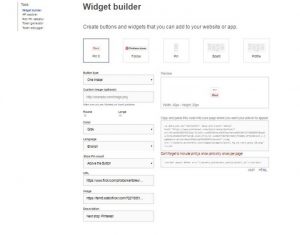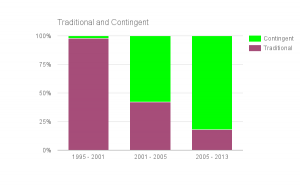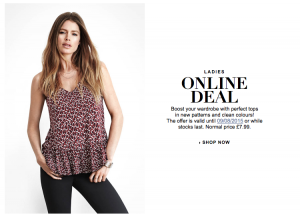— March 2, 2019
In the beginning days of the world wide web, information was organized in a mass jumble with little to no attention to who would be looking at it—until Google.
Google came out of the gates by creating a mission to, “organize the world’s information and make it universally accessible and useful.” Every decision Google made was user-centric. It was present everywhere they developed their search engine—logo placement, typography, color, and style. Because Google’s original platform was so successful, Google moved on to create “hundreds of digital products under the same colorful, quirky logo.”
That is the power of User Interface (UI) Design and why each and every live website should utilize UI Design.
Over the years Google has hired the best UI Designers to develop their entire material theme. Although your budget might not be what Google’s is, you can start by following them in hiring a UI Designer.
Understanding UI Design
User interface (UI) is the process of making complicated computer language into an appealing and simple design that is intuitive and easy to use for users.
“UI brings concepts from interaction design, visual design, and information architecture” to anticipate what users might need to do to accessibly and easily interact with the elements of the site.
UI is different than user experience (UX) design, they are both focused on creating better user interactions, but UX is executed during back-end development while UI is the forefront process—i.e., the large search bar on Google’s homepage is an example of UI Design.
How To Find a Great UI Designer
According to Forbes, “59% of customers will choose to do business with a company over one of its competitors based on good design.”
Before you go hunting to hire the right UI designer to implement your target audiences’ perfect design, there are a few things you should identify first.
Defining Your Needs
It’s important to understand where your company is at and what your project needs in order to be successful.
Determine your budget and availability requirements for hiring a UI Designer. If you don’t want to spend money on a full-time UI Designer, then you might not get an in-depth user-centered design process because they don’t have enough time to conduct contextual interviews, focus groups, or heuristic evaluations.
These are methodologies that designers use to help understand users and their interactions to establish sites as a user-centric platform.
Usability research is an invaluable process, but it might not be in your budget just yet. Determine your company’s needs, and that will determine what is important for your designer from the beginning.
Choose a Designer That Fits Your End Goal
You’ve determined what your company needs, now determine what type of person you need to advance your website into a beautiful and functional website that users want to return to constantly.
Set up interview questions before looking at designer profiles. These questions can act as a roadmap to find how each designer will fit into your project. If you admire what Google has done for the World Wide Web, ask questions about their opinion of Google’s interface design. What are the designer’s specialties? Are A/B Tests determined?
If you’re unsure what elements are important to your website, you don’t need to reinvent the wheel. Sites such as Design.Google and usability.gov have tons of information on the most valuable UI Design skills that can transform your website from words on a screen into an easy and enjoyable platform.
Final Steps in Hiring a UI Designer
After you have an understanding of what your company needs and the best person to accomplish the task, it’s time to look around for the perfect person.
Digital & Social Articles on Business 2 Community
(85)
Report Post





